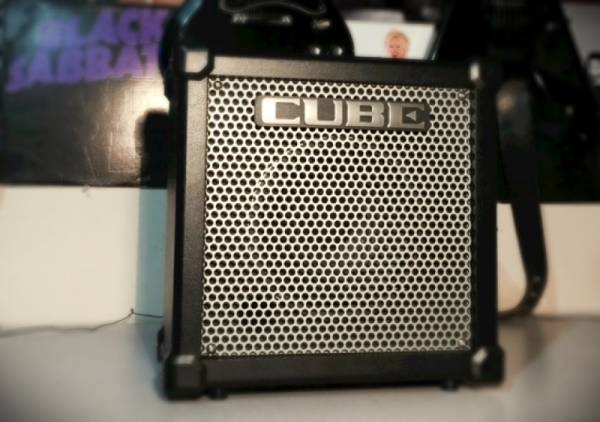
In the interest of being open and honest, I am a tube amp guy. Always have been. When push comes to shove I still feel that nothing can compare to that warm tone I get out of a Marshall head and cabinet. I bought my first one when I was 18 and have had several since. I will have more in the future I’m sure. To my ears, solid state amplifiers don’t have the same tonal quality in that they sounded rather thin and electronic. For the particular style of music that I played (metal,) that just didn’t cut it. I needed the weight and dirt that tubes—and my trusty Boss Heavy Metal pedal—provided. Well, those may be the old days because over the past several years. Digital modelling amplifiers have significantly upped their games and are very close to replicating the sound and power of their larger tube brethren.
Add another Roland unit to that list as the CUBE GX20 has the meaty gnashing of teeth grit to make any self respecting Metalhead hit a power chord and reflexively throw their horns in the air awash in a maelstrom of heavy. Though it features “only” an 8” speaker, you’d never know if you were listening but not looking. The GX20 does an admirable job pushing some air and will give you more than enough volume to entertain or annoy your fellow housemates, depending on their tastes and your skill level. On the Extreme channel with the channel volume and master volumes at only 3 out of 10 (these do NOT go to 11), I had all I could handle in my small space. My ears can only fearfully imagine how much more this unit could produce.
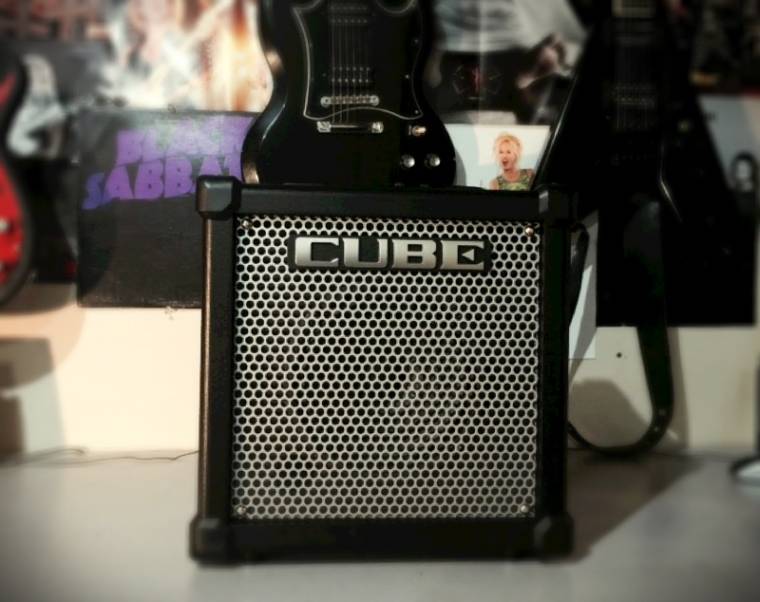
THE SKINNY
The CUBE GX line features 10, 20, 40, and 80 watt models with speaker sizes ranging from 8” in the GX10 and GX20 up to a 12” speaker in the GX80. All models share the same silver and black cube shaped aesthetic although the larger models do have a few more functions not available on the lower watt units. The GX20 boasts that it is the “perfect small amp for jamming, bedroom practice and recording” and after putting it through its paces I certainly can’t disagree.
It is certainly an attractive little monster that catches your eye with its stylish silver grate speaker cover and sleek symmetrical lines. Inside is COSM modelling at its best. COSM stands for Composite Object Sound Modelling and is the Roland/Boss name given to their digital technology in the Cube amps and other guitar effects processors that take your guitar’s sound and in real time digitally alter it to replicate specific sounds or effects made by other amps, guitars, or instruments. My Roland GR-55 Guitar Synth allows me to play flute, piano, organ, and dozens of other instruments using this technology. The CUBE GX20 does it so convincingly that you will forget you have a small solid-state amp as you are clearly hearing what sounds remarkably like a Marshall or Mesa Boogie amplifier.
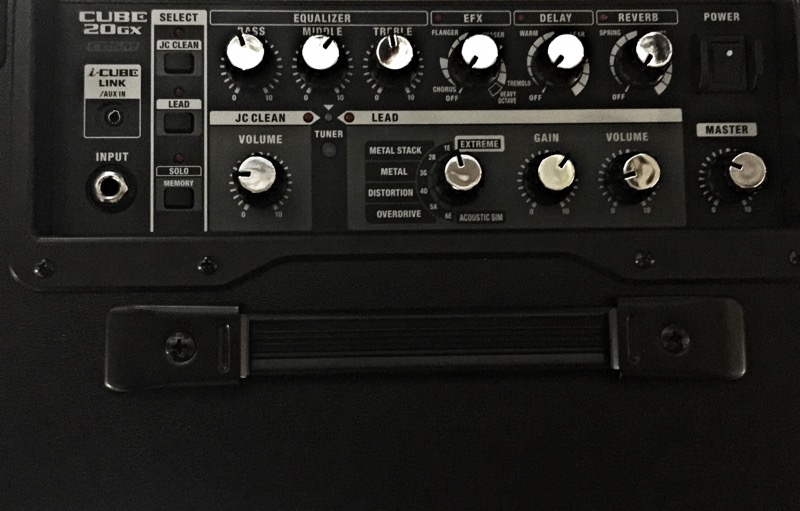 Perhaps the defining feature of the GX20 is the i-CUBE LINK located on the top control panel. It has a couple of different functions. It will allow you, with the included cable, to plug in your iPhone, iPad, or iPod into the jack for two-way communication. You can play a song on your phone and play along on the GX20 or you can use one of your device apps to record your playing. You could also the amp as a speaker and just plug in your device, kick back and relax while listening to some of your guitar heroes dazzle you with their music.
Perhaps the defining feature of the GX20 is the i-CUBE LINK located on the top control panel. It has a couple of different functions. It will allow you, with the included cable, to plug in your iPhone, iPad, or iPod into the jack for two-way communication. You can play a song on your phone and play along on the GX20 or you can use one of your device apps to record your playing. You could also the amp as a speaker and just plug in your device, kick back and relax while listening to some of your guitar heroes dazzle you with their music.
Taking this even one step further, Roland has a CUBE JAM app for iOS that functions as a virtual command centre for recording, jamming, and practicing. Load songs from your device into the app and then you can play along at regular speed as well as adjusting the speed up or down depending on what you are looking to do. The app also allows you to adjust pitch this way as well. I had read recently where several had mentioned that this was really a game changer for Roland and the smaller digital modelling amplifier and having played with it for a little while, I can’t entirely simply dismiss this as hyperbole.
The CUBE GX20 also has an onboard tuner, which is a nice feature to be sure, but is probably the weakest part of the package. It only works in standard A=440 Hz pitch so for those that play with their strings at alternate tunings, especially half-step down versions, are out of luck. There is also no digital read out for this like on other comparable models as only a couple of lights can guide you through the tuning process. While not the most user intuitive or friendly way to tune, it does ultimately get the job done and will save you the cost of an independent tuning device. There is a jack at the back for an optional footswitch and while I didn’t have one to try, I know that it would ultimately make using this unit and performing quick switches between channels and settings incredibly easy.
THE DEMO
I have included a video demo (my first for Best Buy) for the CUBE GX20 that I hope shows you the variety and possibilities that this unit possesses. I play my Jackson RR1 through all of the channels from clean to lead to solo to let you hear the differences. I began on the clean channel and playedd with no effects whatsoever before switching on some chorus and reverb. You should also note that for the 3 band EQ–the bass, mid, and treble knobs–I left them at the 12:00 position for all of the demos. While it did not produce the exact sound that I would go for personally, by leaving them in a neutral setting, you should be able to hear the sound produced and realize that there is still significant room to play with these tones by simply adding more bass, sucking out some of the mid range, or dialling up the treble. Or the opposite of that. Basically, you have a lot of room to play with your tone and I wanted to highlight that without taking up too much of your viewing time.
THE BOTTOM LINE
There are many choices in the marketplace for this kind of smaller less expensive amplifier and the Roland CUBE GX20 certainly demands consideration. The iOS integration through the i-CUBE LINK and CUBE JAM app is an incredibly fun and interesting feature that may just set it apart from the competition. The ability to easily connect to your iPhone, iPad, or iPod to jam along with tracks, practice difficult phrases by adjusting speeds or pitch, and recording your playing is a tool that should appeal to a large number of players, especially those new into the world of guitar playing. And don’t let the names of the settings fool you. While there are names like Metal and Metal Stack, this amp is inclusive to all styles of guitar playing from jazz to rockabilly to surf. It just also happens to be really metal when you need it to be. There is much more to the CUBE GX20 than can be covered here so I encourage you to give it a test spin and find out for yourself just how capable and fun this unit can be.
|
Rate Power Output: 20 W Speaker: 20 cm (8 inches) X 1 Controls: POWER switch JC CLEAN button LEAD button SOLO (MEMORY) button TUNER button BASS button MIDDLE button TREBLE BUTTON EFX knob (CHORUS, FLANGER, PHASER, TREMOLO, HEAVY OCTAVE) MASTER knob JC CLEAN CHANNEL VOLUME knob LEAD CHANNEL TYPE switch (ACOUSTIC SIM, OVERDRIVE, DISTORTION, METAL, METAL STACK, EXTREME) GAIN knob VOLUME knob
Connectors: INPUT jack: 1/4 inch phone type i-CUBE LINK/AUX IN jack: 4 pole miniature phone type RECORDING OUT/PHONES jack: Stereo 1/4 inch phone type FOOT SW (TIP: JC CLEAN/LEAD, RING: SOLO) jack: 1/4 inch TRS phone type AC IN jack Power Consumption: 24 W Dimensions: 378 (W) X 221 (D) X 384 (H) mm 14-15/16 (W) X 8-3/4 (D) X 15-1/8 (H) inches Weight: 7.6 kg 16 lbs 13 oz Accessories: Owner’s manual Power Cord Mini Cable (4-pole miniature phone type) Options (sold separately): Footswitch (BOSS FS-5U, BOSS FS-6) |
Read more about amps here:
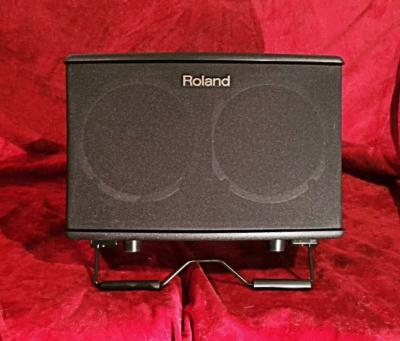 Review: Roland Acoustic AC-40 |
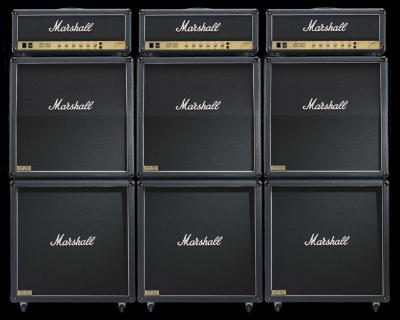 How do I choose an amp? |



